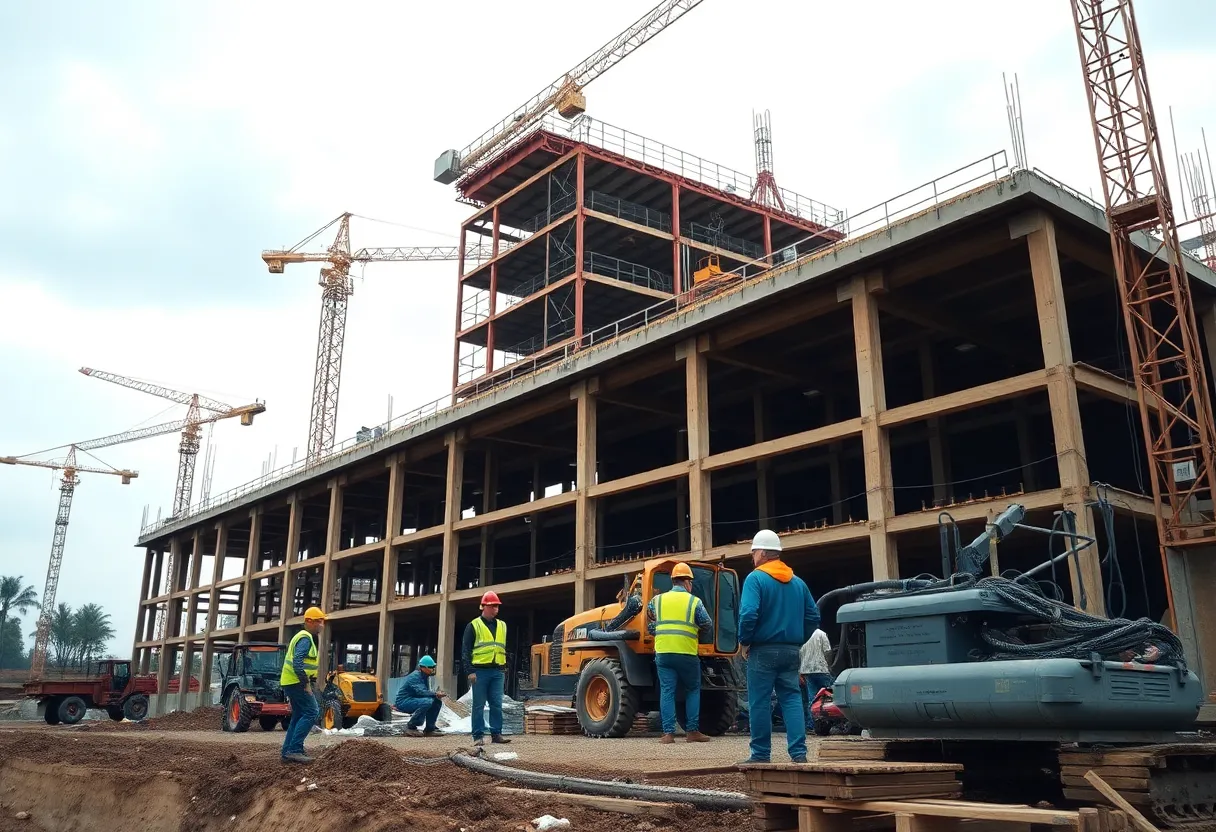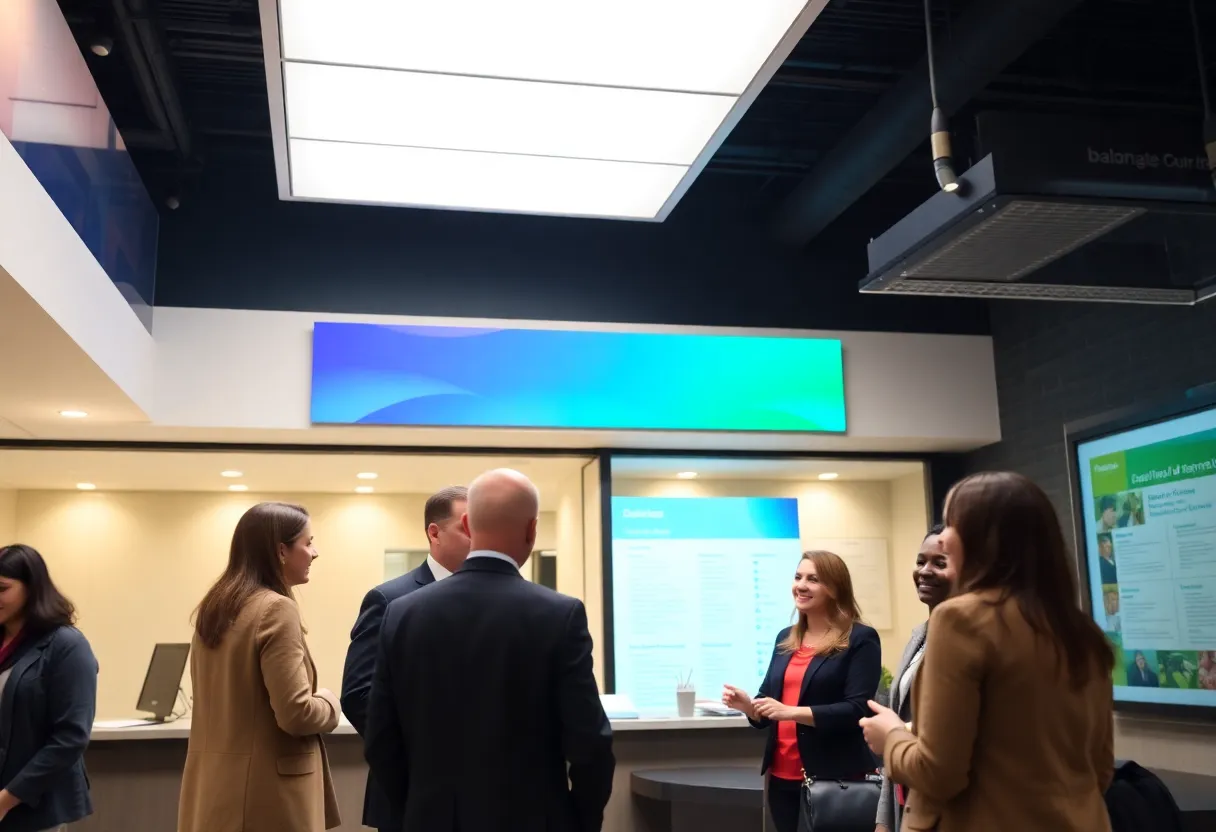Global, October 14, 2025
News Summary
The construction and real estate sector struggles with inflation, interest rate uncertainty, and cyber threats, while facing labor shortages and supply chain challenges. Despite these hurdles, potential for growth exists in urban regeneration and energy transition infrastructure. Experts suggest strategies like diversifying project portfolios and enhancing cyber hygiene to mitigate risks. As firms navigate a competitive landscape, investing in digital tools and improving workforce engagement becomes essential for future success.
City: Global
The construction and real estate sector is currently navigating a complex web of challenges that stress its resilience and adaptability. Key issues influencing the industry include inflation, interest rate uncertainty, fragile supply chains, increasing geopolitical tensions, and volatility in commodity prices.
Adding to these hurdles, the rapid digitalization of the sector has heightened vulnerabilities to cyber threats. Labor shortages coupled with rising competition have made it increasingly challenging for businesses to deliver projects on time and within budget. Despite these numerous difficulties, there remains potential for growth, particularly in areas such as data centers, energy transition infrastructure, and urban regeneration projects.
A recent survey reveals significant concerns held by leaders in the construction and real estate fields. Many face an economic slowdown, liquidity issues, cash flow risks, and escalating cyber threats. Traditional risk management frameworks are finding it hard to cope with the interlinked risks affecting project feasibility.
The current geopolitical instability and persistent inflation have left investment decision-making paralyzed, translating into a wave of project delays and cancellations. However, experts suggest that organizations can mitigate these risks by stress-testing project viability under varying economic conditions. Additionally, diversifying project portfolios and securing more flexible financing options are recommended strategies to maintain momentum through downturns.
Heightened cash flow and liquidity risks have emerged from growing concerns over balance sheets and payment reliability, leading contractors to face delayed payments and cost overruns. To counter these challenges, the strategic use of surety bonds can help preserve working capital and provide a safeguard against insolvency.
Cyber risk has become a significant concern, particularly in light of the increased digitalization within the industry. Job sites are often poorly equipped with cybersecurity measures, making them prime targets for ransomware and supply chain attacks. Investing in cyber hygiene, endpoint protection, and enhanced supply chain visibility is essential to reducing exposure to these threats.
The turbulent market for commodities such as steel and copper further complicates long-term project budgeting, resulting in significant cost escalations. To maintain project viability amid inflationary pressures, experts recommend flexibility in contracts and strategic purchasing strategies to lock in material prices.
Looking ahead, the sector faces numerous challenges, including intensified competition, evolving cyber threats, and ongoing economic uncertainty. Additionally, a dual workforce crisis looms, characterized by labor shortages and a widening skills gap. A major portion of skilled workers is approaching retirement, creating an experience void amid rising digital demands.
To attract and retain talent, the industry must rebrand itself as an appealing career path and significantly invest in employee development programs. The pressure of rising competition, fueled by infrastructure investment, has reportedly increased the influx of new firms into the marketplace, further intensifying bidding wars.
As technology plays a crucial role in creating differentiation within the sector, businesses are prioritizing investments in digital tools like building information modeling and artificial intelligence. To address these interconnected risks effectively, organizations should embrace comprehensive risk management frameworks that factor in human capital alongside operational risks. Corporate culture, employee engagement, and satisfaction will significantly influence risk exposure and overall performance.
In summary, the construction and real estate industries are at a crossroads, faced with significant challenges but also harboring unique opportunities for growth. The need for a proactive approach to risk management and workforce strategies has never been more critical as the sector attempts to navigate its evolving landscape.
Frequently Asked Questions
What are the key challenges facing the construction and real estate sector?
Key challenges include inflation, interest rate uncertainty, cyber threats, labor shortages, and supply chain issues, among others.
How can companies mitigate financial risks in this environment?
Companies can diversify project portfolios, secure flexible financing, and implement stress-testing to evaluate project viability under different economic scenarios.
Why is cyber security a growing concern in the construction industry?
As the industry digitalizes quickly, job sites often lack adequate cyber infrastructure, increasing vulnerabilities to ransomware and supply chain attacks.
Key Features of Current Challenges in the Construction Sector
- Economic Pressures: Inflation, interest rates, and liquidity concerns.
- Labor Shortages: Skills gap and an aging workforce.
- Cyber Threats: Increasing exposure to cyber risks.
- Commodity Volatility: Fluctuating prices of essential materials.
- Opportunities: Growth in energy infrastructure and urban regeneration projects.
Deeper Dive: News & Info About This Topic
HERE Resources
DPR Construction’s Build Up High School Internship Program
Kannapolis, NC Building Boom Sparks Construction Expansion
Proposed Chicken Plant in Coffee County Halted by Court Ruling
Local Businesses Struggle Amid Bob Hart Square Construction
Hudson School Board Faces Decision on Elementary School Closures
Grapevine, Texas Considers Elementary School Closures
Philadelphia Small Businesses Struggle with Rising Costs
Hudson School Board Discusses Closure of Two Elementary Schools
District 65 Discusses Potential School Closures
Burlington Hosts Community-Focused ‘Construction Fest’
Additional Resources
- Aon: How Human Capital Data Enhances Risk Management
- Investopedia: Human Capital
- Risk & Insurance: Human Capital Investment
- PR Newswire: Aon Appoints Andy Marcell as CEO
- J.P. Morgan: Importance of Human Capital Management
- Wikipedia: Human Capital
- Google Search: Construction Risk Management
- Google Scholar: Human Capital in Construction
- Encyclopedia Britannica: Risk Management
- Google News: Cybersecurity in Construction
Author: STAFF HERE PHILADELPHIA WRITER
The PHILADELPHIA STAFF WRITER represents the experienced team at HEREPhiladelphia.com, your go-to source for actionable local news and information in Philadelphia, Philadelphia County, and beyond. Specializing in "news you can use," we cover essential topics like product reviews for personal and business needs, local business directories, politics, real estate trends, neighborhood insights, and state news affecting the area—with deep expertise drawn from years of dedicated reporting and strong community input, including local press releases and business updates. We deliver top reporting on high-value events such as Mummers Parade, Philadelphia Flower Show, and Thanksgiving Day Parade. Our coverage extends to key organizations like the Greater Philadelphia Chamber of Commerce and United Way of Greater Philadelphia, plus leading businesses in telecommunications, food services, and healthcare that power the local economy such as Comcast, Aramark, and Children's Hospital of Philadelphia. As part of the broader HERE network, we provide comprehensive, credible insights into Pennsylvania's dynamic landscape.





